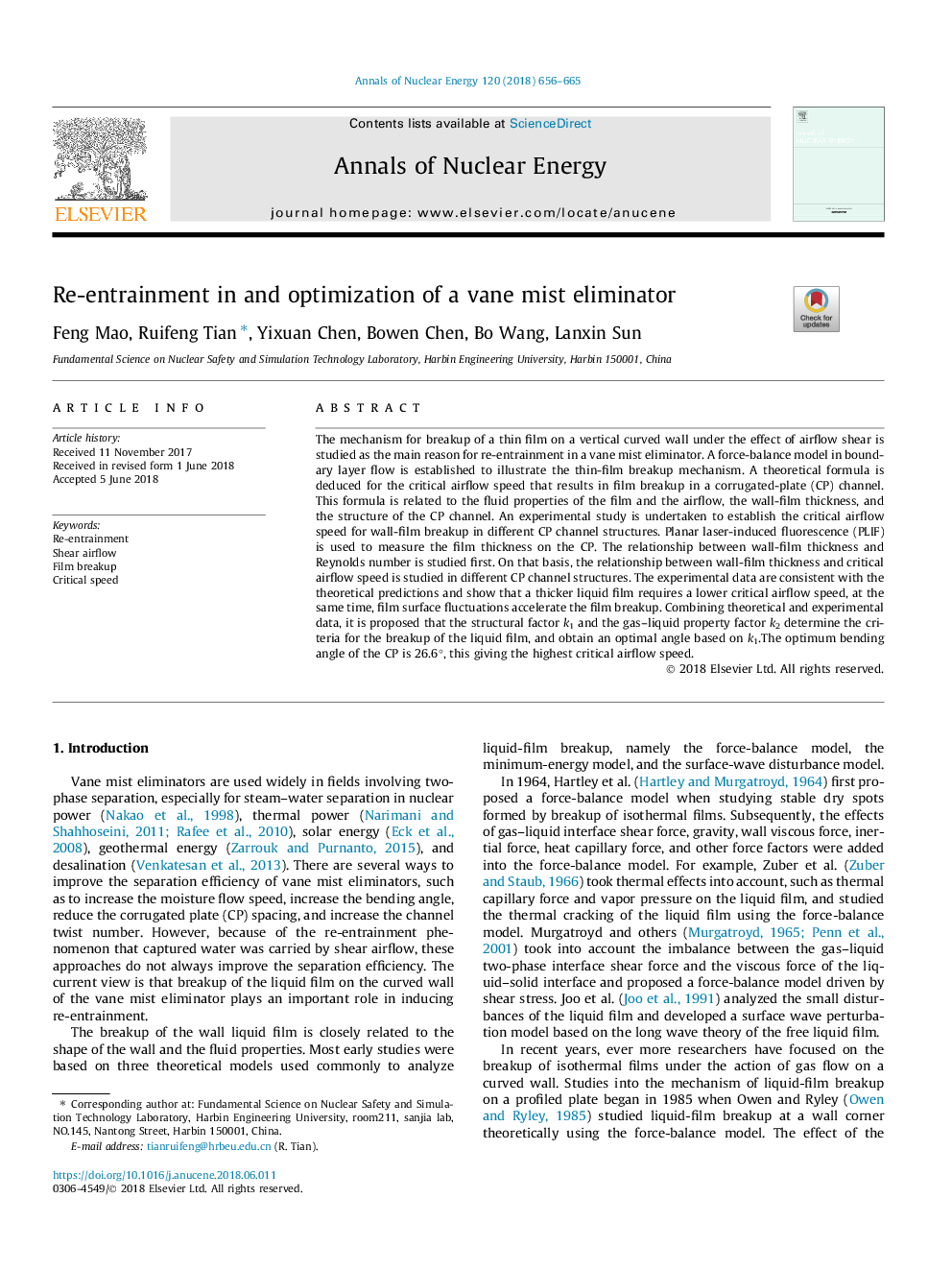| Article ID | Journal | Published Year | Pages | File Type |
|---|---|---|---|---|
| 8066876 | Annals of Nuclear Energy | 2018 | 10 Pages |
Abstract
The mechanism for breakup of a thin film on a vertical curved wall under the effect of airflow shear is studied as the main reason for re-entrainment in a vane mist eliminator. A force-balance model in boundary layer flow is established to illustrate the thin-film breakup mechanism. A theoretical formula is deduced for the critical airflow speed that results in film breakup in a corrugated-plate (CP) channel. This formula is related to the fluid properties of the film and the airflow, the wall-film thickness, and the structure of the CP channel. An experimental study is undertaken to establish the critical airflow speed for wall-film breakup in different CP channel structures. Planar laser-induced fluorescence (PLIF) is used to measure the film thickness on the CP. The relationship between wall-film thickness and Reynolds number is studied first. On that basis, the relationship between wall-film thickness and critical airflow speed is studied in different CP channel structures. The experimental data are consistent with the theoretical predictions and show that a thicker liquid film requires a lower critical airflow speed, at the same time, film surface fluctuations accelerate the film breakup. Combining theoretical and experimental data, it is proposed that the structural factor k1 and the gas-liquid property factor k2 determine the criteria for the breakup of the liquid film, and obtain an optimal angle based on k1.The optimum bending angle of the CP is 26.6°, this giving the highest critical airflow speed.
Keywords
Related Topics
Physical Sciences and Engineering
Energy
Energy Engineering and Power Technology
Authors
Feng Mao, Ruifeng Tian, Yixuan Chen, Bowen Chen, Bo Wang, Lanxin Sun,
